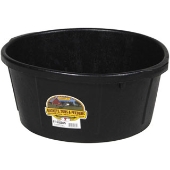posted 2 years ago
When my husband was young his family had a dairy farm with Holstein cows. County agent told them to give them a soy based feed. All the cows started giving less milk and a lot of mastitis issues. Their holistic vet came to the rescue and said stop all soy, give them buckwheat., and mostly forage. Buckwheat is 12% protein, but a complete protein, and is a seed, not a grain. They did, all cows recovered, more milk, more live calves, etc. The secret was in getting the pastures highly mineralized which made it more nutritious with more protein and digestible nutrients.
Cows and goats don’t digest grain well if they get much of it. It can cause e.Coli. I do feed some sprouted oats, sunflower seed to goats and chickens.
Duckweed is 40%protein and easy to grow in ponds or containers. I try to throw a handful in their drinking water every day (chickens) and they pick it out and eat it. I put a little cal/Phos and trace minerals in the water to make it grow faster. Tree hay is often higher in protein and minerals than alfalfa at 17%. Alfalfa hay here is almost $1. Per lb., so cost prohibitive. Mulberry is 18 to 28% protein, highly digestible and has 25x more calcium than milk; however, can block absorption of carbs and cause weight loss. So feed sparingly with other stuff. Sunflower or sunchoke (same family) has as much as 28% protein and lower leaves are highest in calcium. Chop finely or cook for chickens and they eat more of it. Poplar leaves have 15 to 16% protein and goats relish it. Goats and sheep can eat black locust, which is 24% protein. Multiflora Rose has a whopping 14.5 to 18% protein and is anti-bacterial so a medicine plant for goats, sheep, cows. Sweet potato leaves are 17%, autumn olive 26.5, although protein can vary with age of leaves on most things. Younger growth is a bit higher. With any feeds, it is important to feed a wide selection and then watch to see what they pick out. Then give them more of that, as they intuitively will balance their diet. And expect it to change every few days as they get enough of this mineral or that, and suddenly too much so they stop favoring that as a feed source.
I also grow a lot of winter squash, because it is so easy and it stores all year. I feed it cooked to the chickens, or raw and sliced into small slices for goats. The seed are a natural wormer too. A good carb for energy and weight gain. In Europe that is a primary swine feed in winter. High also in Beta carotene.
I feed a high copper mineral mix to my dairy goats. Otherwise I would just give everyone, including chickens, a little Redmond conditioner. Kelp is a good mineral source too.
With high feed prices, and sometimes not even able to get hay or grain, I’m looking for any alternatives I can find.
My plan this year is to grow more of those big long neck butternut (weigh up to 25 lbs. each), and more duckweed and sunflower for both hay and seed. The chickens can be given a whole head and will pick it out themselves and it gives them something to do so they don’t get bored. The seed are 30 to 40% protein.
Most soils in the entire world have been leached out of most minerals, and humate levels which sequester minerals and water in the soils have decreased from over 25% to sometimes less than 2% in many areas. Therein lies a lot of the problem. Until we heal and regenerate the land, the nutrition for livestock and the resultant health which comes from eating that, just isn’t there. If the mineral isn’t in the soil or is locked up and unavailable because the microbes are dead, it won’t be in the crop. Remember, calcium governs uptake of all other minerals. But you don’t want to overdo it either, as that creates more imbalance.
With appropriate microbes, minerals and organic matter, there is no need for pesticides or herbicides.

 6
6




 4
4




 4
4




 1
1




 6
6




 6
6




 2
2




 5
5




 1
1




 1
1




 6
6












